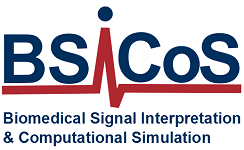-
Proyectos
Multi-Scale Physiology-Driven Computational Tools To Assist In The Assessment And Management Of Cardiac Dysfunctions (MScPhCarDys)
Fecha de inicio
2016
Fecha de finalización
2019
Coordinador
Juan Pablo Martínez, Esther Pueyo
Funding agency
MINECO, DPI2016-75458-R
Ischemic heart disease or coronary artery disease, atrial fibrillation and heart failure are three of the most prevalent diseases in the European Union, causing hundreds of thousands of deaths every year, either by malignant ventricular arrhythmias, pump failure, or stroke produced as a result of prolonged atrial fibrillation.
The project is based on the following hypotheses: a) multiscale characterization (from cellular ionic currents to surface ECG) of the electrophysiological changes produced by various pathological and non-pathological cardiac conditions (such as cell aging or microgravity) will produce an advance in the knowledge of the mechanisms of arrhythmogenesis and other types of cardiac dysfunction, and b) that this knowledge about the role of changes in the substrate, automaticity and interaction with the autonomic nervous system will allow the development of computational tools for better identification of invididual cardiac risk and the optimal application of therapies such as radiofrequency catheter ablation. To do this, we will work on three technological levels: 1) biological experimentation (in addition to using data provided by other groups, some experiments will be performed in the groups’ own laboratory), 2) multiscale computational modelling to reproduce the experimental and clinical observations and simulate the effect of other conditions and 3) signal analysis (cellular, intracardiac and surface). The methodology will be guided by physiology and clinical applications, and will integrate information from all three technology levels, being subject to continual reassessment and validation.
The main expected contributions are: i) increasing the knowledge about the physiology of proarrhythmic mechanisms at cell, tissue, organ and body scales in order to ascertain how arrhythmia can be anticipated and treated, and from this knowledge ii) propose and validate biomarkers for non-invasive stratification of cardiac risk (sudden cardiac death or pump failure) and therefore assist in clinical decisions (such as the implantation of cardioverter defibrillators or cardiac resynchronization devices) and iii) propose new ways to characterize and map substrate and conduction information to guide and optimize catheter ablation procedures. In this way, the project will contribute to improving the interpretation of cardiovascular signals, providing cardiologists with reliable information for the decision-making and selection of the most appropriate therapies.
Scientific advances in this project are expected to have relevant impact in obtaining more effective methods for diagnosis and therapy. The possibility of early identification of patients at high risk, especially in the context of diseases with high prevalence, and among the elderly population has an important socioeconomic impact, improving the long-term quality of life of the population and reducing the burden on health systems.
